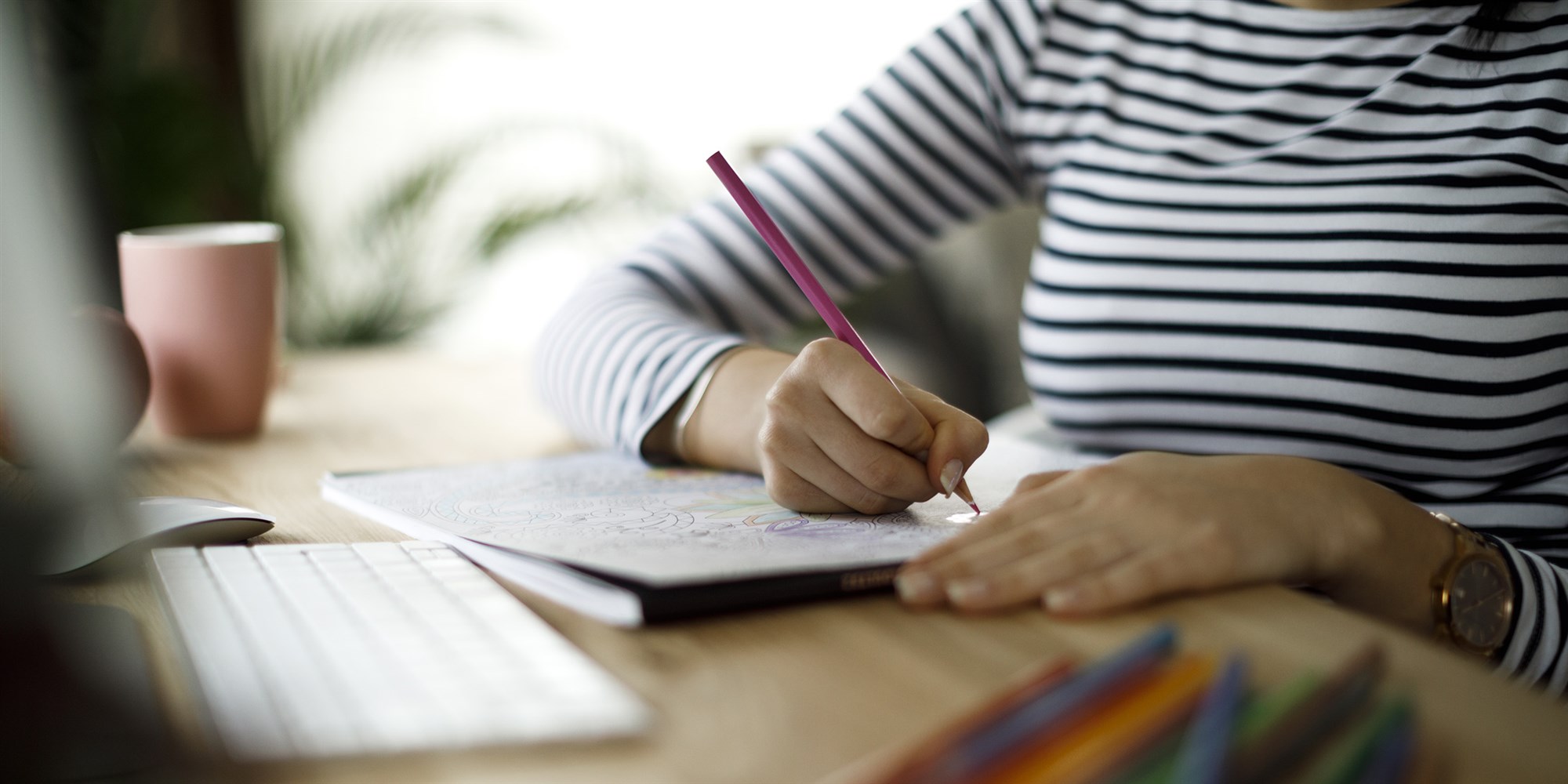Here are some activities you can try at home.
 Coloring and doodling can actually help you feel calmer. damircudic / Getty Images
Coloring and doodling can actually help you feel calmer. damircudic / Getty Images
Have you ever caught yourself doodling during a work meeting and realized it actually made you feel calmer? As it turns out, creativity actually has healing powers.
That’s why there’s a whole profession dedicated to using art to help with mental health. It’s called art therapy, and while it’s been around for a while, it’s been growing in popularity.
Margaret Carlock-Russo, president of the American Art Therapy Association and associate professor and program coordinator, expressive arts therapy at Prescott College, told TMRW that, especially in stressful times, people naturally turn to art when they’re seeking relief.
For example, people have been creating murals and artwork for the protests surrounding racial justice. “That, to me, speaks to the deep human need to express ourselves,” Carlock-Russo said.
What is art therapy?
Just as you might see a psychologist or traditional therapist, art therapy requires working with a licensed or registered professional with training. It pairs the creative process (drawing, collaging, etc.) with psychological theory and human experience to help individuals address concerns, emotions and different situations that might be concerning to them.
“Any time a person would think about going to see a counselor or therapist, they can also consider seeing an art therapist,” Carlock-Russo said. “One of the big misnomers is that because it has art in the title, a lot of people sometimes automatically think, ‘Oh, that’s for kids,’ but that’s not the case at all. It is for children, but it’s not only for children.”
What Happens in art therapy?
You know how sometimes you have trouble putting how you’re feeling into words? That’s where the art comes in. It’s a way to express your emotions and feelings in a nonverbal way.
One thing art therapists want you to know is that you don’t have to be artistic to do this. “It’s not at all the same as when someone creates a fine art piece or wants to learn how to draw or paint,” she said. “This is about learning how to utilize media so that you can create lines, shapes, colors and symbols and reflect what you’re feeling inside, and that can come out spontaneously.”
For example, how are you engaging with the media? How are you creating lines and shapes? What colors are you choosing? “We don’t analyze (the client’s art) but we use that information to help them understand what they’re experiencing at the moment.”
How can I do art therapy activities at home?
If you’re feeling anxious or sad, there are some creative projects you can do at home to help give your mental health a boost and release some tension. Carlock-Russo offered some ideas that aren’t officially art therapy (since that requires working with a professional), but are great for self-help and wellness.
This doesn’t take the place of seeing an actual art therapist if you think you need more help. “If a person is struggling with deeper emotions and things they can’t seem to grapple with or handle on their own, I absolutely advocate for them to seek help from a professional,” Carlock-Russo advised.
1. Create a collage
Perhaps you’re familiar with collaging from your teenage years, where your bedroom walls and school notebooks were covered with pictures of you and your friends, concert tickets and anything else that had meaning to you. Well, it turns out collaging can also be good for your mental health.
Grab some old magazines and cut out some pictures from it, then glue them together on a piece of paper in a new way that expresses an idea inside of you or a feeling you want to relieve, Carlock-Russo suggested. “You can also do a collage with just colored paper and just make it about shapes and lines and colors and not images,” she said.
2. Draw a picture of your favorite place
You know how looking at pictures from a favorite vacation can make you feel happy? Well, going through the action of drawing a place that makes you feel comfortable, relaxed and calm can bring back all of those feelings again, plus it can help calm you in the moment, Carlock-Russo suggested.
3. Make affirmation cards
Inspirational quotes can lift your mood (Hoda Kotb knows all about that!). Carlock-Russo suggests writing or printing out some of your favorites and gluing them on the numbered sides of a deck of playing cards. “It could be something even as simple as ‘Breathe’ or ‘Take a moment,’” she said. You can hang up a few around the house, pull a new one out every morning to focus on a positive thought or even keep one in your pocket during the day and look at it when you need a little moment of balance.
4. Doodle
If you’re feeling stressed, doodling can actually help you relax by distracting you while keeping your attention centered. Carlock-Russo suggests pairing it with movement (like drawing on a big white board or chalkboard), which can also help you release some tension and energy.
“You don’t need to think about (the doodle) a lot,” she said, adding you should just relax your brain and let it go. “You’re releasing all of those thoughts that are nagging at you,” she said.